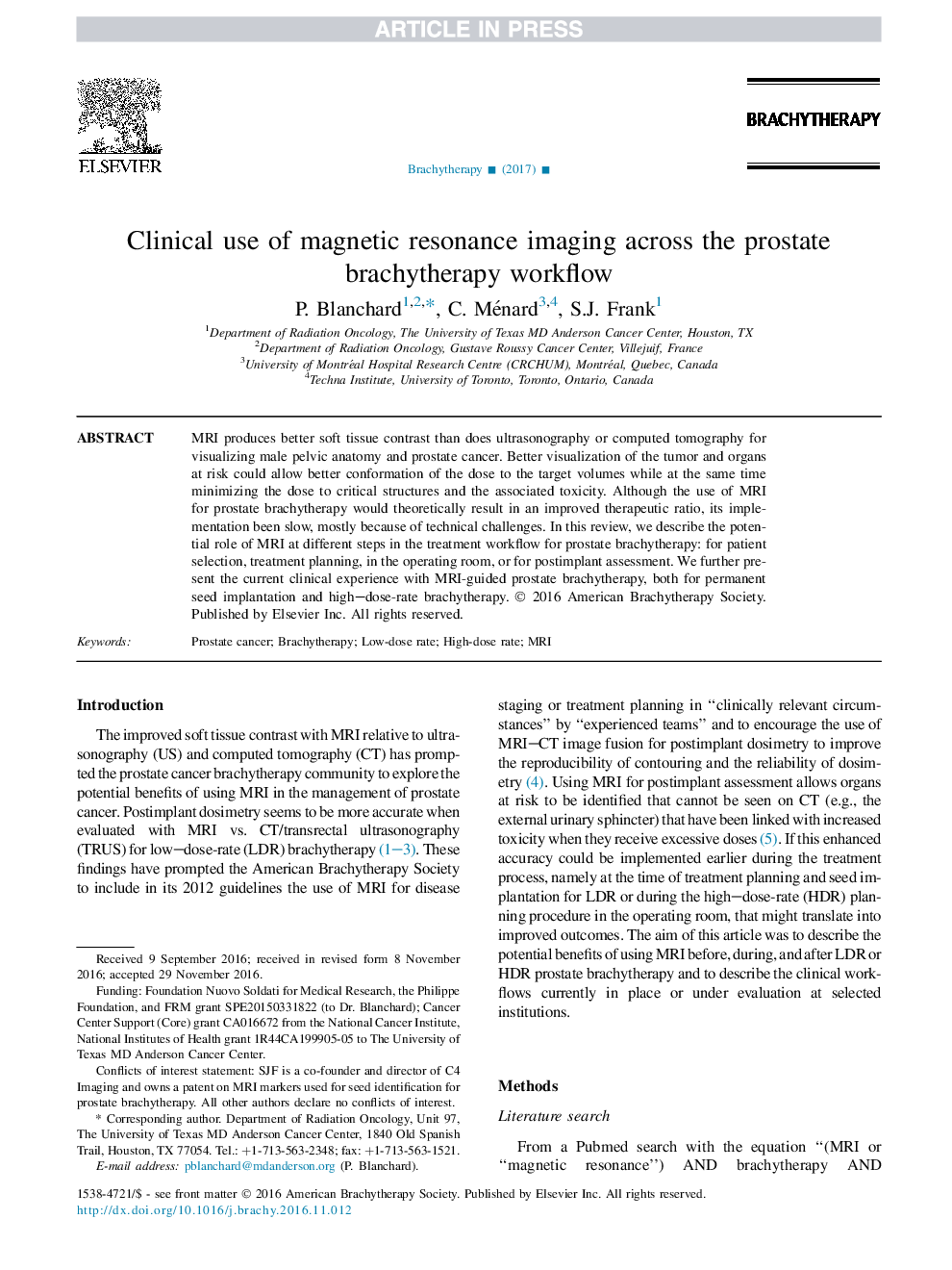| Article ID | Journal | Published Year | Pages | File Type |
|---|---|---|---|---|
| 5696997 | Brachytherapy | 2017 | 9 Pages |
Abstract
MRI produces better soft tissue contrast than does ultrasonography or computed tomography for visualizing male pelvic anatomy and prostate cancer. Better visualization of the tumor and organs at risk could allow better conformation of the dose to the target volumes while at the same time minimizing the dose to critical structures and the associated toxicity. Although the use of MRI for prostate brachytherapy would theoretically result in an improved therapeutic ratio, its implementation been slow, mostly because of technical challenges. In this review, we describe the potential role of MRI at different steps in the treatment workflow for prostate brachytherapy: for patient selection, treatment planning, in the operating room, or for postimplant assessment. We further present the current clinical experience with MRI-guided prostate brachytherapy, both for permanent seed implantation and high-dose-rate brachytherapy.
Related Topics
Health Sciences
Medicine and Dentistry
Oncology
Authors
P. Blanchard, C. Ménard, S.J. Frank,
